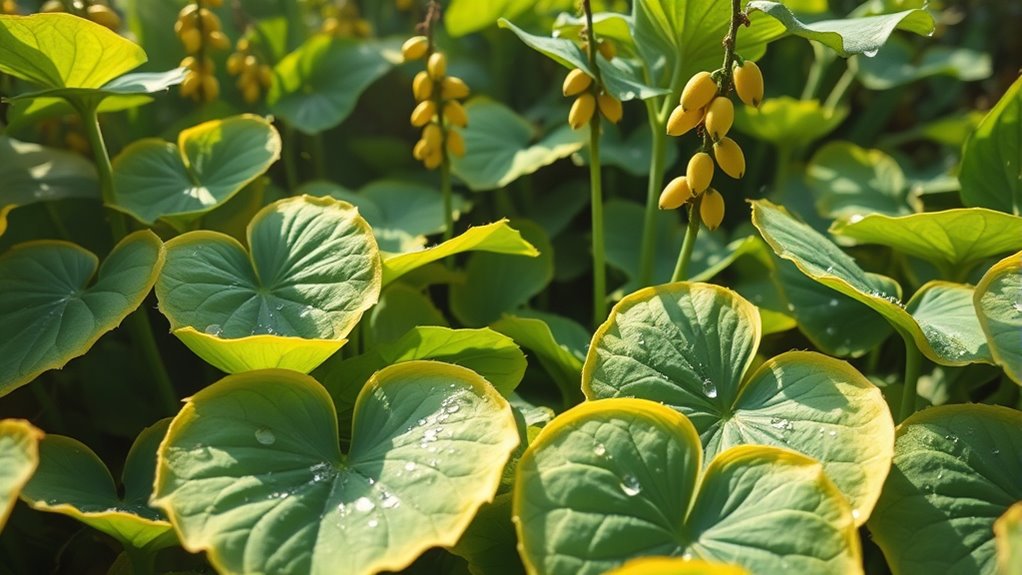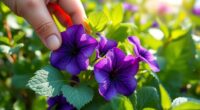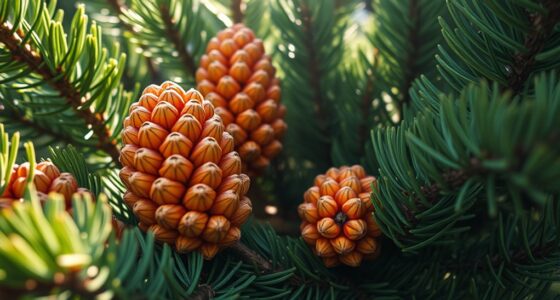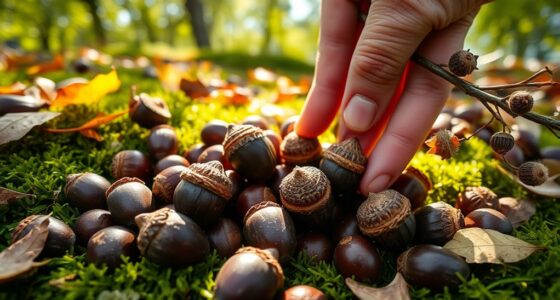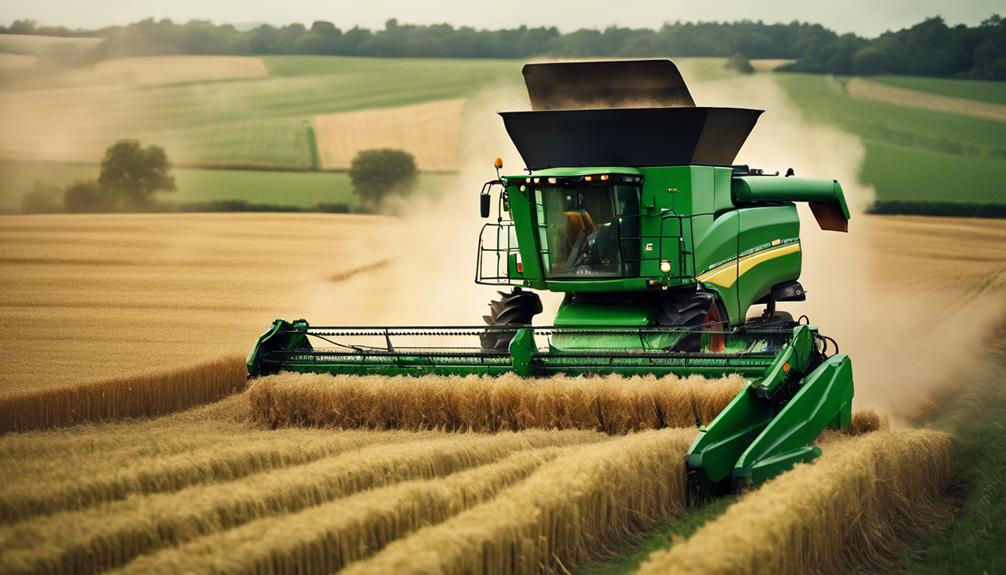Plantain is often overlooked as just a weed, but it’s actually a powerful, versatile resource you can forage for food, medicine, and skincare. Recognizable by its broad or lance-shaped leaves, it grows easily in disturbed soils and offers nutritional benefits like vitamins A, C, and K. It also has medicinal uses for healing wounds, soothing digestion, and reducing inflammation. If you want to discover how to harness this common plant’s hidden potential, there’s much more to uncover.
Key Takeaways
- Plantain is an edible, medicinal, and skin-care plant that offers nutritional benefits beyond its common weed status.
- It plays a vital ecological role by stabilizing soil, preventing erosion, and supporting biodiversity in disturbed areas.
- Foragers can sustainably harvest leaves and seeds, contributing to environmental health and cultural culinary traditions.
- Recognized globally, plantain holds cultural significance in traditional dishes and herbal remedies across various regions.
- Proper identification and responsible foraging ensure plantain remains a valuable resource for health, cuisine, and ecological balance.
Recognizing Different Types of Plantain in the Wild
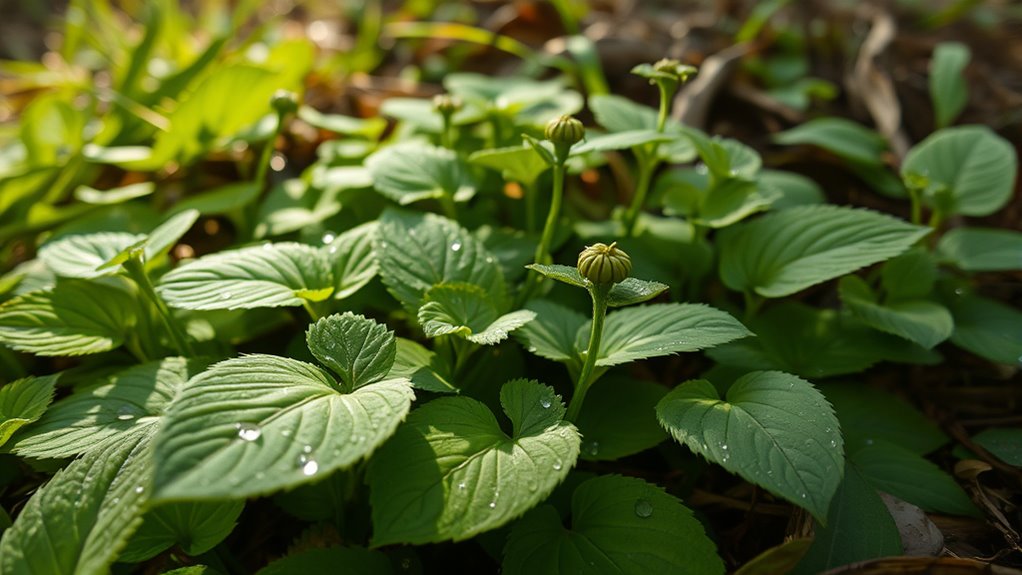
Are you confident in your ability to distinguish between the different types of plantain in the wild? First, look at the leaves: broadleaf plantain has large, oval-shaped leaves, while narrowleaf plantain features slender, lance-like leaves. Blackseed plantain resembles tall broadleaf varieties but has a purple hue at the leaf and stem junction. Recognize the plant by its leaf venation—vertical, prominent veins run through each leaf. The growth habit is low to the ground, with leaves forming a rosette at the base. Observe the flower spike in the center, covered in small flowers. Pay attention to leaf margins, which are typically wavy and sometimes toothed. Knowing these features helps you accurately identify plantain in various environments, from yards to roadsides. Additionally, understanding the preservation efforts associated with native plant species can enhance your appreciation of their ecological significance. Recognizing the importance of native plant conservation can also inspire efforts to protect these valuable species in your community. Developing skills in plant identification supports the broader goal of native plant preservation and ecological health.
Edible and Nutritional Benefits of Plantain Leaves
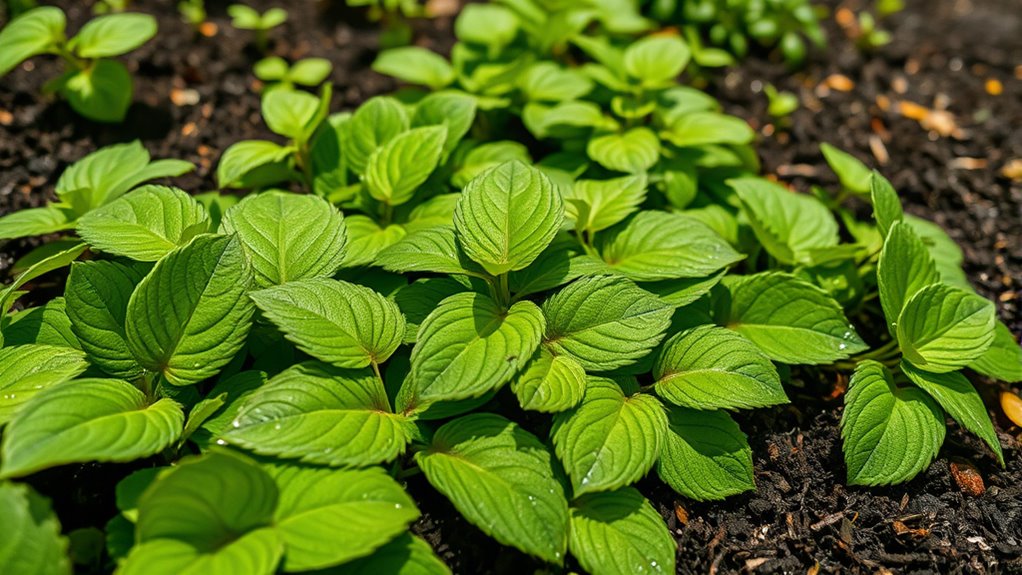
Recognizing the different types of plantain is just the first step; understanding how to use its leaves can uncover their full nutritional potential. You can eat plantain leaves raw, cooked, or brewed into teas. They’re packed with vitamins A and C, which help boost your immune system, and vitamin K, essential for blood clotting. Incorporating smart home technology into your gardening or food prep routines can enhance your health practices. The leaves also contain tannins that reduce inflammation and antioxidants like flavonoids and terpenoids that fight oxidative stress. Additionally, understanding nutritional benefits can help you maximize their health impact. Incorporating them into salads, soups, or smoothies to maximize their health benefits. When cooked, they add flavor and nutrition to your meals. Dried leaves can be stored for later use as herbal supplements. Regular consumption supports overall health, enhances immunity, and provides essential minerals for balanced nutrition. Exploring plantain’s medicinal properties can further deepen your appreciation for this versatile plant.
Medicinal Uses and Healing Properties of Plantain
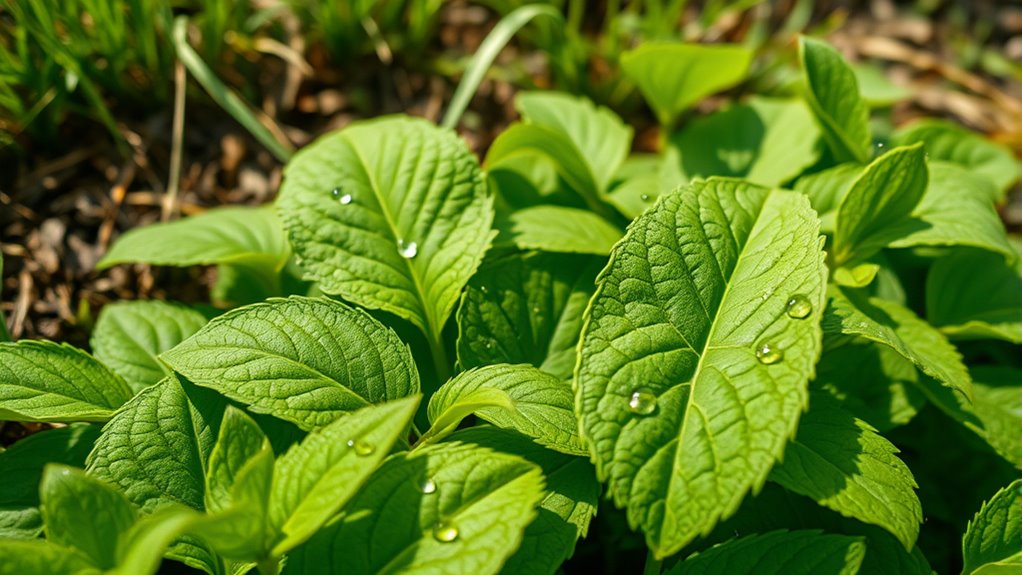
Plantain has long been valued for its remarkable healing properties, making it a versatile remedy for various health issues. It supports digestive health by soothing gut irritation, reducing inflammation, and helping treat gastritis and ulcers thanks to its tannin content. Digestive health benefits are further supported by its gentle astringent qualities that help tighten tissues and reduce excess mucus. Additionally, research indicates that plantain contains compounds with anti-inflammatory properties, which further enhance its healing potential.
Plantain is a versatile remedy known for soothing digestion and promoting healing.
If you suffer from IBS or colitis, plantain can help manage symptoms and aid in parasite removal. Its astringent qualities also make it effective against diarrhea. Additionally, its ability to promote tissue repair aligns with the Law of Attraction principles of visualizing and manifesting health and healing. Topically, plantain accelerates wound healing, fights infection, and calms skin irritations like dermatitis and insect bites. Its anti-inflammatory and antibacterial actions make it a natural choice for soothing skin conditions and reducing inflammation. Recognizing how medicinal plant properties contribute to overall health can deepen your understanding of herbal remedies.
It benefits the respiratory system by easing lung irritation and supporting immune function. Additionally, its expectorant properties help clear mucus from the respiratory tract, providing relief from coughs and bronchitis. With its anti-inflammatory and antibacterial actions, plantain helps reduce inflammation, promote tissue repair, and manage urinary tract infections. Proper understanding of beneficiary designation rules can help ensure that the medicinal and healing benefits of plantain are preserved for future generations and that your herbal remedies are passed on with the intended benefits.
How to Prepare and Incorporate Plantain Into Your Diet
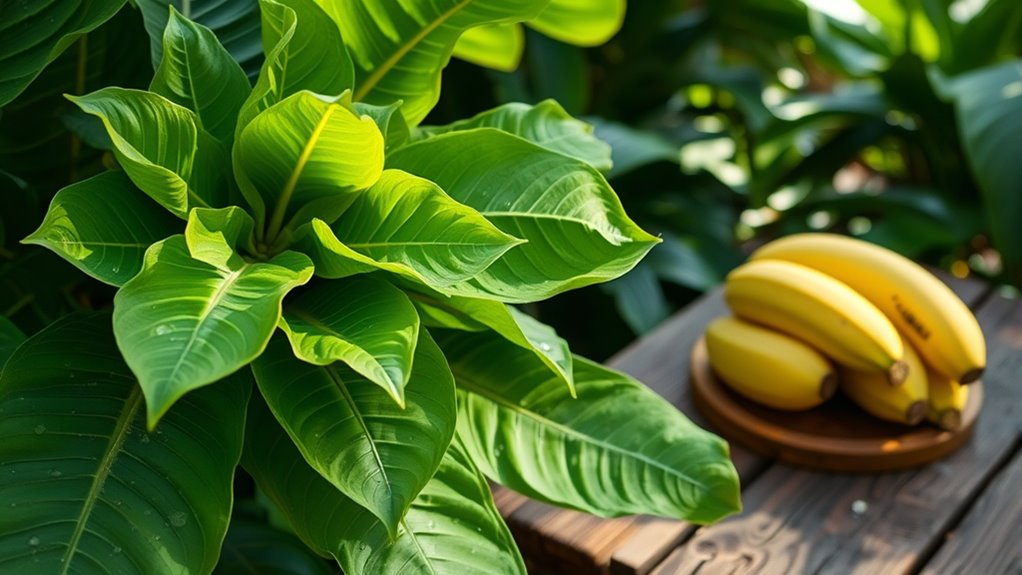
To incorporate plantains into your diet, start by choosing the right type for your desired dish, whether green, yellow, or black, as each offers different flavors and textures. Green plantains are starchy and ideal for dishes like tostones or plantain chips, often fried until crispy. Ripe, yellow plantains are firmer and sweeter, perfect for boiling, baking, or frying as a side or snack. Fully ripe, black plantains are very sweet and work well baked or grilled to enhance their flavor. Use boiling to tenderize green or yellow plantains, or fry slices for crispy chips. Baking unpeeled ripe plantains at low heat or grilling them brings out natural sweetness. In addition, understanding the gear shifting process on a bike can help you manage the terrain more effectively when preparing plantains or exploring different cooking methods. Recognizing the pinball machine weight is also useful if you plan to move heavy plantains or equipment around your kitchen or workspace. Being aware of Glycolic Acid benefits can also help you maintain healthy skin if you choose to incorporate skincare routines alongside your culinary activities. Proper storage techniques are essential to prolong the freshness of your plantains, prevent spoilage, and maintain their nutritional quality.
Using Plantain for Skin Care and Natural Remedies
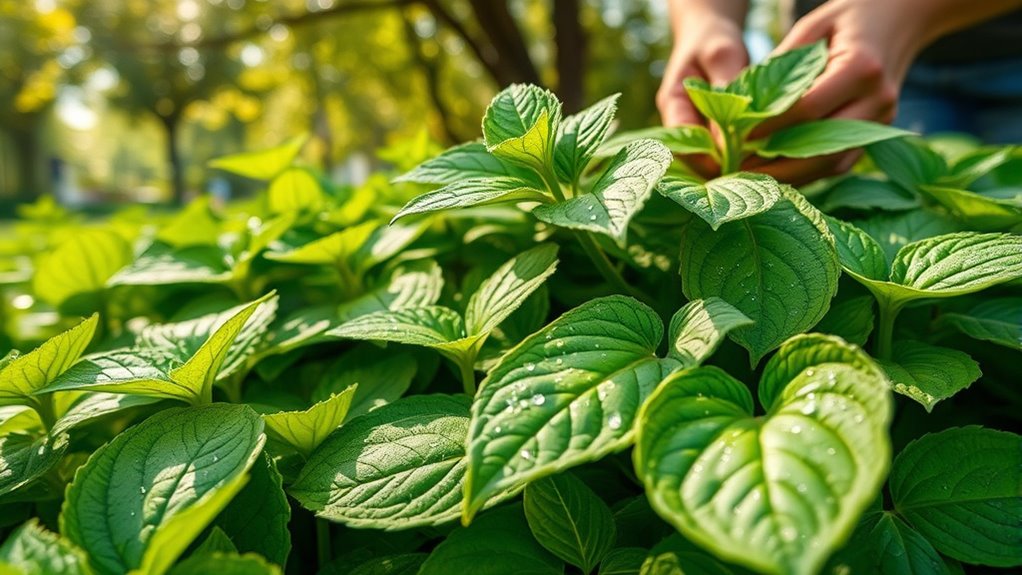
If you’re interested in natural remedies, plantain offers a versatile option for skincare. Its extracts are incorporated into products to improve facial contours, minimize pores, and reduce under-eye circles.
Plantain’s anti-inflammatory properties soothe irritated skin, while its moisturizing benefits keep your skin hydrated. The antimicrobial and antibacterial qualities help prevent infections, accelerate wound healing, and reduce scarring.
You can infuse fresh plantain leaves into oils like coconut or olive for topical use or add dried leaves to lotions and lip balms.
Plantain-based skincare provides deep cleansing, toning, and calming effects, making it suitable for sensitive skin. Its ability to reduce inflammation, soothe bites, and alleviate sunburn makes it an effective natural remedy for various skin issues, supporting healthy, resilient skin. Additionally, its sustainable harvesting practices ensure that using plantain is environmentally friendly and responsible.
Supporting Local Ecosystems Through Plantain Foraging
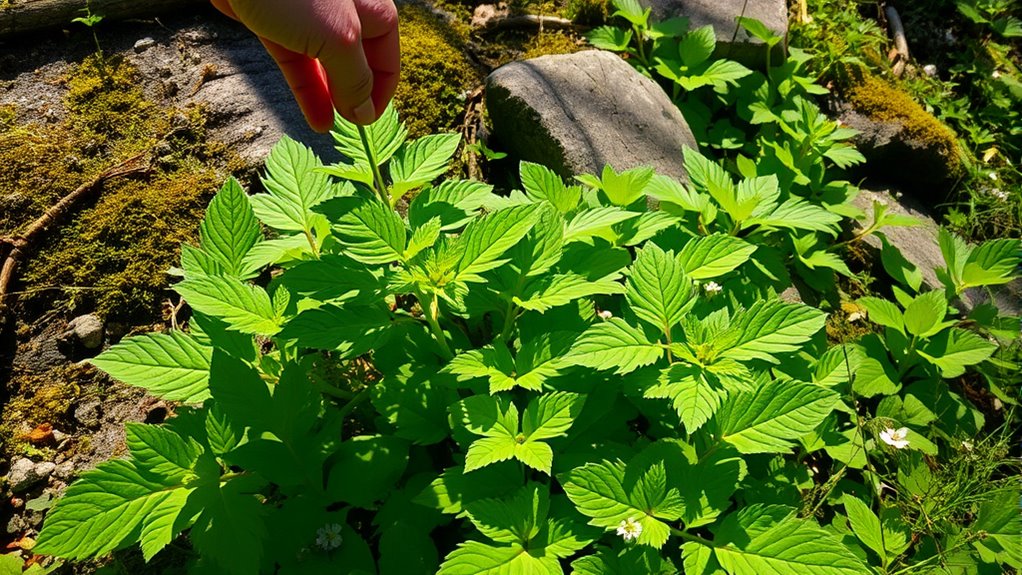
Supporting local ecosystems through plantain foraging benefits both the environment and your community. Plantain grows easily in disturbed soils, lawns, and along paths, making it a reliable resource. Its wide distribution across various climates and soil types shows its adaptability, while its evergreen nature helps stabilize soil year-round. Additionally, its ability to tolerate compacted soils supports soil health and prevents erosion, further aiding ecosystem stability.
As you harvest leaves and seeds responsibly, you’re supporting biodiversity by providing food for insects and birds. Plantain’s ability to thrive in compacted soils aids in soil stabilization and nutrient cycling, enriching the local environment. Regularly checking soil conditions can help ensure sustainable foraging practices and promote healthy plant growth. Understanding the growth habits of plantain can help you identify the best times and locations for harvesting, especially since its resilience is linked to its adaptability to different environments.
Building awareness of ecosystem dynamics encourages mindful harvesting that maintains the plant’s benefits for the environment. Since it poses no conservation threats, sustainable foraging guarantees this plant remains abundant. By choosing to harvest plantain thoughtfully, you help maintain ecological balance, promote soil health, and contribute to a resilient local ecosystem.
The Cultural and Historical Significance of Plantain

Plantain foraging isn’t just about gathering a versatile plant; it’s also about connecting with a rich cultural history that spans centuries and continents. Originating in Southeast Asia around 500 BC, plantains traveled through trade routes to Africa, then to the Caribbean and Latin America via the Transatlantic Slave Trade.
In Puerto Rico, by the 17th century, they became essential to local diets, symbolizing family, identity, and resilience.
In Caribbean and Latin American cuisines, plantains serve as a central ingredient in traditional dishes like mofongo and tostones, reflecting African, indigenous, and European influences.
For the African diaspora, plantains embody cultural heritage and community bonds. Raw food can be incorporated into traditional dishes to preserve culinary authenticity and promote health.
Recognized globally, they’re celebrated in events like World Plantain Day, highlighting their enduring cultural and historical significance.
Understanding the importance of emotional well-being can deepen our connection to traditional foods and practices, preserving cultural identity through culinary heritage.
Frequently Asked Questions
Can I Identify Plantain Without Prior Botanical Knowledge?
You can identify plantain even without prior botanical knowledge by looking for its distinct ground-hugging rosettes of smooth-edged leaves. Focus on the prominent parallel veins that stretch like strings when broken.
Notice the leaf shape and size, such as broad, oval leaves or slender, lance-shaped ones. Check the habitat—plantain prefers disturbed, compacted soils.
With careful observation of these features, you can confidently recognize plantain in the wild.
Are All Plantain Species Equally Safe to Eat and Use Medicinally?
Imagine all plantains as different characters in a story—some are allies, others may cause trouble. Not all plantain species are equally safe to eat or use medicinally; some are like gentle healers, while others might have stronger effects or risks.
You need to identify each carefully, just like discerning friends. Always confirm the species before consuming or using them medicinally, to guarantee safety and reap their full benefits.
How Do I Distinguish Plantain From Harmful Look-Alikes?
To distinguish plantain from harmful look-alikes, examine its broad, oval-shaped leaves with wavy margins arranged in a basal rosette. Look for prominent, curved veins and smooth, leathery texture.
Check for a fibrous taproot and pale green flowers on slender stalks. Avoid plants with toothed leaves like dandelions or lanceolate leaves like dock.
Always confirm identification, steer clear of polluted areas, and watch for poison ivy or oak to stay safe.
What Are the Best Seasons for Foraging Plantain in Different Regions?
You want to know the best seasons for foraging plantain in different regions.
In temperate areas, spring through fall offers the freshest leaves and peak growth, with late spring being ideal.
Tropical regions allow year-round foraging due to consistent growth.
Dry and mountainous regions may require timing around moisture levels or cooler temperatures.
Always forage during active growth periods for the best quality and abundance.
Can Plantain Be Cultivated Intentionally for Food and Medicine?
Think of cultivating plantain like planting a treasure chest—carefully and intentionally. Yes, you can grow plantains for both food and medicine.
With the right soil, moisture, and space, you’ll nurture healthy plants that provide nutritious fruits and healing leaves.
Propagate easily from roots or seeds, and enjoy a versatile crop that supports sustainable living and traditional healing.
Making your garden a source of wellness and abundance.
Conclusion
As you walk through your local park, you might notice a familiar green leaf peeking through the grass—reminding you that plantain isn’t just a weed, but a natural gift. By learning to recognize and use it, you connect with centuries of tradition and support local ecosystems. Maybe today’s walk leads you to discover a new edible or remedy, turning a simple moment into a meaningful step toward nature’s abundant healing.

